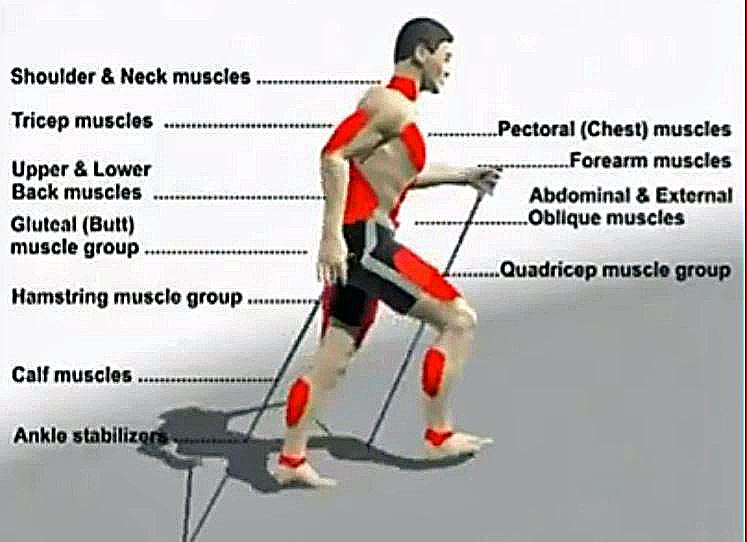Walking is one of the simplest and most effective forms of exercise. It is also one of the most natural activities for humans. When we walk, our body uses a complex system of muscles, joints, and bones to move us forward. But which muscles are used when we walk? This article will explore the answer to this question in detail.
The Basics of Walking

Before we discuss the muscles used in walking, it is important to understand the basic mechanics of the process. Walking involves a repetitive motion of shifting our weight from one leg to the other. When we take a step, our foot lands on the ground and our body weight shifts forward. This motion propels us forward and allows us to take the next step with the opposite foot.
The Muscles Involved

Walking requires the use of several major muscle groups in our legs, including our quadriceps, hamstrings, glutes, and calves. These muscles work together to provide the force needed to move our body weight forward. Our quadriceps, located in the front of our thigh, are responsible for extending our knee and pushing us forward. Our hamstrings, located in the back of our thigh, help to control our speed and provide support for our knee. Our glutes, located in our buttocks, help to stabilize our pelvis and provide power for our forward motion. Our calves, located at the back of our lower leg, help to push us forward and provide lift for our heels.
The Importance of Core Muscles

While our leg muscles are the most obvious muscles used in walking, our core muscles also play an important role. Our core muscles include our abdominal muscles, lower back muscles, and hip muscles. These muscles help to stabilize our body and keep us upright as we walk. They also help to transfer the force generated by our leg muscles into forward motion.
The Role of Joints

In addition to our muscles, our joints also play a critical role in walking. Our ankle, knee, and hip joints work together to provide stability and mobility as we move. Our ankle joint, for example, helps to absorb shock and provides balance as we push off with our toes. Our knee joint helps to control the motion of our legs and provides support for our body weight. Our hip joint helps to stabilize our pelvis and provides power for our forward motion.
The Benefits of Walking

Walking is a low-impact form of exercise that offers a wide range of benefits. It can help to improve our cardiovascular health, strengthen our muscles, and boost our mood. Regular walking can also help to reduce our risk of chronic diseases such as heart disease, diabetes, and stroke.
Tips for Safe Walking
While walking is generally safe for most people, it is important to take certain precautions to avoid injury. Here are some tips for safe walking:
- Wear comfortable, supportive shoes
- Stay hydrated
- Warm up before you start walking
- Start slowly and gradually increase your pace
- Use proper form
- Be aware of your surroundings
- Stay visible when walking at night
Conclusion
Walking is a simple yet effective exercise that can provide numerous health benefits. When we walk, our body uses a complex system of muscles, joints, and bones to move us forward. By understanding the muscles used when walking, we can better appreciate the importance of this activity and make the most of its benefits.